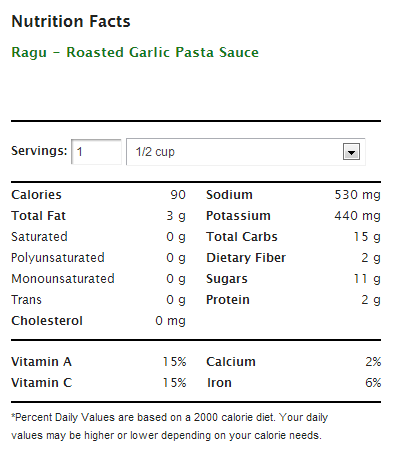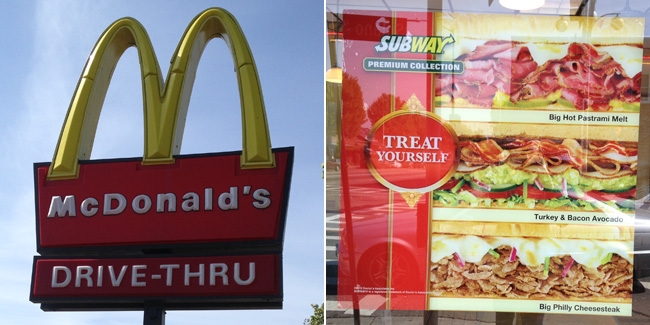Posts Tagged: fast food
Alice Waters calls for slow-food values
Alice Waters (chef, author and UC Berkeley alum) spoke at UCLA's Science and Food event, Edible Education, about the ways in which food can be a catalyst for deeper transformations in education and culture.
Waters' commitment to education led to the creation of the Edible Schoolyard in Berkeley, a one-acre garden and kitchen classroom at Berkeley's Martin Luther King Jr. Middle School. The success of the program led the Chez Panisse proprietor to found the Edible Schoolyard Project, a nonprofit organization with the goal of building and sharing an edible education curriculum from kindergarten through high school. Its vision is for gardens and kitchens to become interactive classrooms for academic subjects, and for every student to have a free, nutritious, organic lunch.
“Yes, there is a fast-food culture operating in this world and, yes, it permeates every aspect of our lives; but fortunately there is a counterforce to all of this, an antidote, and I call it – no surprise – ‘slow-food culture,’” Waters said. “Now, slow-food culture is not as flashy as fast-food culture, but it’s richer and deeper and truly fulfilling and life-affirming.”
Listen to Waters’ talk to learn more about fast-food values versus slow-food culture.
Childhood obesity: It's a disease
I spent last week at the Childhood Obesity Conference in Long Beach representing UC Agriculture and Natural Resources. I had heard that obesity was an epidemic. I had heard it's an issue that needs to be tackled. But I hadn't ever heard the extent of it before.
According to the Centers for Disease Control and Prevention (CDC), childhood obesity has more than doubled in the past 30 years. Adolescent obesity has tripled. In 2010, more than one-third of children and adolescents were obese. Last week, the American Medical Association went as far as to declare obesity a disease. The CDC has stated this is a direct result of caloric imbalance - children aren't expending enough calories, and they're eating too many.
In his keynote address, Michael Moss, investigative reporter with the New York Times and author of Salt Sugar Fat: How the Food Giants Hooked Us, mentioned that a half cup of tomato sauce has as much sugar as several Oreo cookies. I researched this, and sure enough according to MyFitnessPal, a leading food tracking software and app, a half cup of Ragu Roasted Garlic Pasta Sauce has 11g of sugar, while a serving of three Oreo cookies has 12g of sugar. As Moss mentioned, kids are taught to expect sweetness in everything they eat. According to him, the food industry is exploiting the biology of children. No wonder we can't get our kids to eat their vegetables.
This reminds me of a video clip I saw on YouTube of Jamie Oliver's television show Food Revolution. He goes into a classroom, hoping to have kids identify fresh vegetables, only to discover they don't know the difference between a tomato and a potato.
How did we get to this point? How have we become so disconnected from the food we eat and the things we put into our body? How did we get to a point where Oreos, Happy Meals and Cheez-Its were cool, but vegetables and fruits weren't? And most importantly, what do we do about it?
Is this next video a sign of where we are headed?
A fast-food dilemma
What do you think would be healthier: a meal at Subway or a meal at McDonald’s?
My tween boys, who cringe at the sight of the Golden Arches, answered Subway. It seemed to make sense. Shouldn’t a sandwich chain be a healthier option than a fast-food purveyor of burgers?
Not necessarily so. While Subway may promote itself as the "healthy" fast-food restaurant, it might not be a much healthier alternative than McDonald's for adolescents, according to new UCLA research.
In a study published May 6 in the Journal of Adolescent Health, researchers found that adolescents who purchased Subway meals consumed nearly as many calories as they did at McDonald's. Meals from both restaurants are likely to contribute toward overeating and obesity, according to the researchers.
How can that be?
The researchers found that the participants – 97 adolescents ages 12 to 21 – bought meals containing an average of 1,038 calories at McDonald's and an average of 955 calories at Subway.
"We found that there was no statistically significant difference between the two restaurants, and that participants ate too many calories at both," said Dr. Lenard Lesser, who led the research while a Robert Wood Johnson Foundation clinical scholar in the Department of Family Medicine at the David Geffen School of Medicine at UCLA and the UCLA Fielding School of Public Health.
The Institute of Medicine recommends that school lunches not exceed 850 calories. An adolescent should consume an average of about 2,400 calories in a day.
Among the researchers' other findings:
- The sandwiches purchased by participants contained an average of 784 calories at Subway versus 572 calories at McDonald's.
- Participants purchased sugary drinks averaging 61 calories at Subway and 151 calories at McDonald's.
- Customers in the study purchased side items such as french fries and potato chips that added an average of 35 calories at Subway compared with 201 calories at McDonald's.
- Participants consumed 102 grams of carbohydrates at Subway; 128 grams at McDonald's.
- The meals contained an average of 36 grams of sugar at Subway; 54 grams at McDonald's.
- Meals contained an average of 41 grams of protein at Subway; 32 grams at McDonald's.
- Sodium intake averaged 2,149 mg at Subway; 1,829 mg at McDonald's.
"The nutrient profile at Subway was slightly healthier, but the food still contained three times the amount of salt that the Institute of Medicine recommends," said Lesser, who is now a researcher at the Palo Alto Medical Foundation Research Institute.
What would Jared do?
My sons suggested eating a smaller sandwich with less meat. For example, a Subway 6-inch turkey breast sandwich has 280 calories, while a footlong Big Philly Cheesesteak has 1,000 calories.
Lesser, who recommends that McDonald's customers eliminate sugary drinks and french fries from their meals, had similar advice: “If you go to Subway, opt for smaller subs, and ask for less meat and double the amount of veggies," he said.
More veggies – I’m lovin’ that.
Writer mocks efforts in anti-obesity fight
In December, it is not unusual to find wrap-up articles with lists characterizing the past year or decade. Such is the case with an op-ed published by the Las Vegas Review-Journal outlining the "Top five dumbest food cop proposals of the decade."
In the story, writer J. Justin Wilson used a UC Berkeley study to denounce efforts to combat obesity by using zoning law to limit the number of fast food restaurants.
"The problem? A recent report by researchers from UC Berkeley and Northwestern University found that people living with quick access to restaurants weren't fatter than those living farther away," Wilson wrote.
Wilson was referring to a 2008 study called "Are Restaurants Really Supersizing America?"
Michael Anderson of UC Berkeley and David A. Matsa of Northwestern University used the presence of interstate highways in rural areas to determine the supply of restaurants. The obesity data came from the Behavioral Risk Factor Surveillance System, an ongoing, large-scale telephone survey that interviews hundreds of thousands of individuals each year regarding their health behaviors.
"The results find no evidence of a causal link between restaurants and obesity, and the estimates are precise enough to rule out any meaningful effect," the researchers wrote. "Analysis of food intake micro data suggests that although consumers eat larger meals at restaurants than at home, they offset these calories at other times of day."
Even though the researchers found no causal link, they showed in their paper the close correlation of obesity rates and restaurant density over the last 50 years. (See graph below.) They concluded that public health policies targeting restaurants are unlikely to reduce obesity and could negatively affect consumer welfare.
Other obesity prevention ideas Wilson excoriated were:
- Filing lawsuits against fast food restaurants for making people fat.
- Taxing junk food or sweetened beverages.
- Banning sweets in schools.
- Appointing a national food czar.
Wilson might be right about restaurants, however, he cannot be considered an unbiased source. He is a senior research analyst at the Center for Consumer Freedom, a nonprofit coalition supported by restaurants, food companies and consumers to "promote personal responsibility and protect consumer choices."

Obesity and restaurant density have increased on the same trajectory.
Another weight loss story? It must be January
If imitation is the most sincere form of flattery, Subway and its young, folksy spokesman Jared Fogle must be overjoyed. The company's fast food rival Taco Bell has a new spokesmodel, Christine Dougherty, who purportedly lost 54 pounds over two years (results not typical) by eating from the chain's "Fresco" menu.
Bay area news radio station KCBS interviewed UC Berkeley nutrition specialist emeritus Joanne Ikeda to get her thoughts on Taco Bell's new advertising campaign. Ikeda said it's possible dieters could lose weight eating Taco Bell food, but not likely.
"If you make the right selections and you are limiting your calorie intake, you can indeed do that," Ikeda told reporter Patty Reising. "But do most people do it? No, they don't."
It may be called a "drive-thru diet," but Ikeda pointed out they don't have recommended menus for breakfast, lunch and dinner.
"That would be the kind of thing I'd be horrified at," she said.
Ikeda said that get-thin-quick schemes abound around the New Year, but there is really no substitute for healthy eating and exercise to lose weight.
More common sense information about weight loss is available from the UC Berkeley Center for Weight and Health.

(Image used under a Creative Commons license from Flickr user Scott Ableman.)



